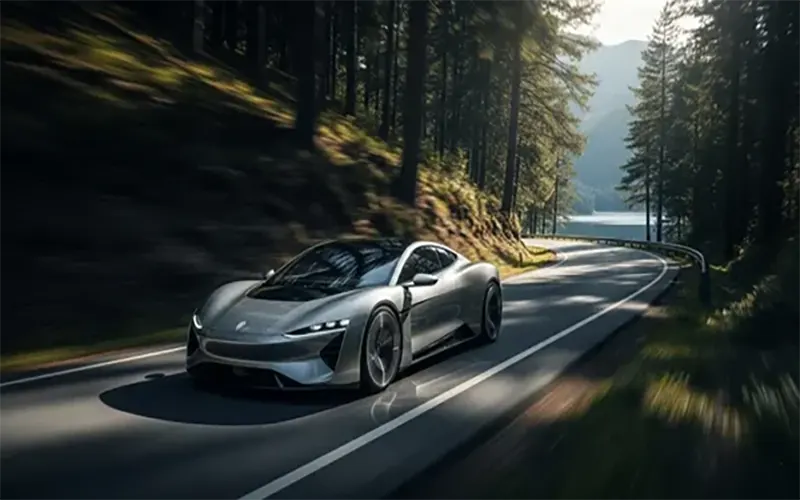For decades, the sound of a roaring engine and the feel of a multi-gear transmission were the hallmarks of a high-performance car. The idea of a fast, fun-to-drive vehicle was intrinsically linked to internal combustion. However, electric vehicles (EVs) are rewriting the rules of automotive performance, offering a driving experience that is not just different, but in many ways, superior. The key to this transformation lies in two fundamental characteristics of an electric motor: instant torque and continuous acceleration.
Instant Torque: The Power of a Push
In a traditional gasoline car, torque—the rotational force that gets the wheels moving—is only available in a specific, narrow RPM range. When you press the accelerator, a complex series of actions must occur: fuel and air ignite, pistons fire, and a crankshaft rotates, all before power is delivered through a transmission to the wheels. This process, while seemingly fast, introduces a moment of lag before the engine reaches its peak torque.
An electric motor, on the other hand, operates on a different principle entirely. It generates torque through electromagnetic force. When electricity flows from the battery to the motor, it instantly creates a magnetic field that causes the motor’s rotor to spin. This means that an EV can deliver 100% of its torque from 0 RPM.
What does this mean for the driver?
- Neck-Snapping Acceleration: The immediate availability of maximum torque from a standstill allows EVs to launch with an astonishing burst of speed. This is why even a relatively affordable EV can often out-accelerate a high-performance gasoline car off the line.
- Unmatched Responsiveness: There is no delay between the moment you press the accelerator and the moment the motor delivers power. This provides a dynamic and highly responsive driving experience, making it easier to maneuver in traffic, pass other vehicles on the highway, and confidently merge onto a busy road.
Continuous Acceleration: The Absence of Gears
Another significant performance advantage of most EVs is the simplicity of their powertrain. A traditional car requires a multi-gear transmission to keep the engine operating within its optimal torque and power band. Each gear shift involves a momentary interruption in the power delivery to the wheels.
Most EVs, however, use a single-speed transmission. The electric motor’s ability to produce consistent torque across a wide range of speeds eliminates the need for multiple gears. This results in:
- Seamless Power Delivery: The power from the motor is transferred directly to the wheels without any interruption from gear changes. This creates a smooth, continuous, and powerful surge of acceleration that is both thrilling and efficient.
- A Smoother Ride: The absence of gear shifts makes the driving experience more comfortable for both the driver and passengers, as there are no lurching movements or abrupt changes in power.
Performance on Demand: More than Just Speed
The performance benefits of EVs extend beyond just straight-line acceleration. The instantaneous torque and simple powertrain also contribute to:
- Enhanced Traction: For all-wheel-drive EVs, the ability to independently and instantly control the torque to each wheel allows for superior traction in all conditions, from wet roads to snow.
- Improved Efficiency: With no need for a complex transmission, less energy is lost to friction and heat, making the EV’s power delivery much more efficient than that of a gasoline car.
Electric vehicles are redefining the meaning of performance. While the roar of a combustion engine may hold a nostalgic appeal, the raw, exhilarating power of instant torque and the seamless, continuous acceleration of an EV are quickly proving to be the new benchmark for a truly dynamic and fun-to-drive vehicle. The electric revolution isn’t just about saving the planet; it’s also about a fundamentally better way to drive.

